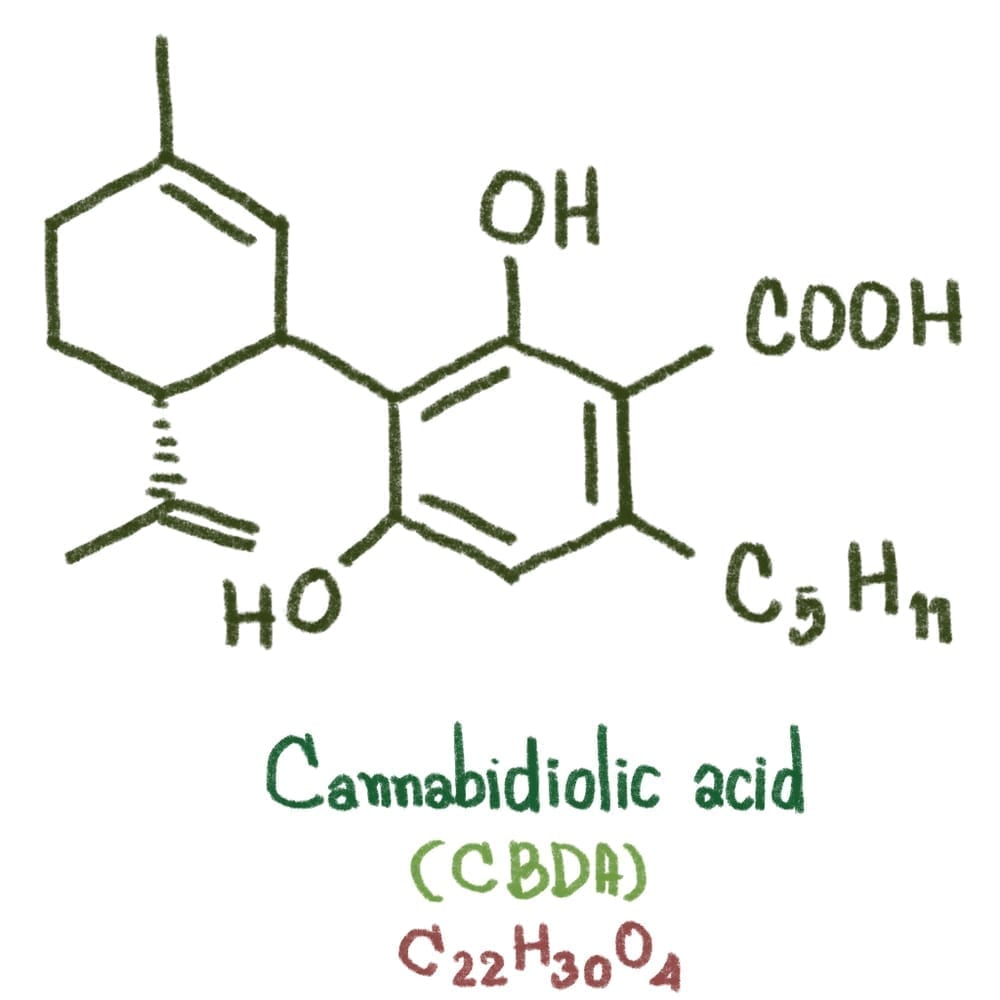The Enigma of CBDA
Let’s journey together into the world of cannabinoids. We’ve all heard about CBD, the poster child of the cannabis industry, but how about its lesser-known precursor, Cannabidiolic Acid (CBDA)? CBDA is the compound found in raw cannabis sativa L and hemp plants that, through the decarboxylation process, becomes the widely hailed CBD. While CBDA might seem overshadowed by its more famous offspring, it’s increasingly gaining attention for its unique properties and potential health benefits.
Understanding Cannabinoids: A Family Affair
It’s essential to grasp that CBDA is part of an intricate network of cannabinoids, including CBD, THC, and Cannabigerolic Acid (CBGA). These compounds are all born from a common mother, CBGA. Imagine CBGA as the matriarch of the cannabinoid family, birthing these distinct compounds with different molecular structures and effects. Let’s put on our lab coats and delve into the fascinating chemistry behind these relationships.
The Decarboxylation Process: From Raw to Refined
Picture yourself in the kitchen. You’re armed with raw ingredients, preparing to whip up a culinary masterpiece. Just as cooking transforms raw ingredients into delectable dishes, the decarboxylation process works its magic on cannabinoids. Heat and time trigger this process, converting CBDA into CBD by removing a carboxyl group from its chemical structure. And voila! We’ve got our much-loved CBD.
This process is not just a chemistry marvel; it’s an essential step in unlocking the psychoactive effects of cannabinoids. Interestingly, neither CBDA nor CBD can make you feel ‘stoned’ or high. That’s a job reserved for THC, another child of the cannabinoid matriarch, CBGA.
Unraveling CBDA’s Role in the Endocannabinoid System
Your body is an intricate system, constantly adjusting to maintain a state of balance, or homeostasis. Part of this balancing act involves your endocannabinoid system, which interacts with cannabinoids like CBDA. Think of it like a lock-and-key system, where the cannabinoids are the keys that unlock various responses in your body.
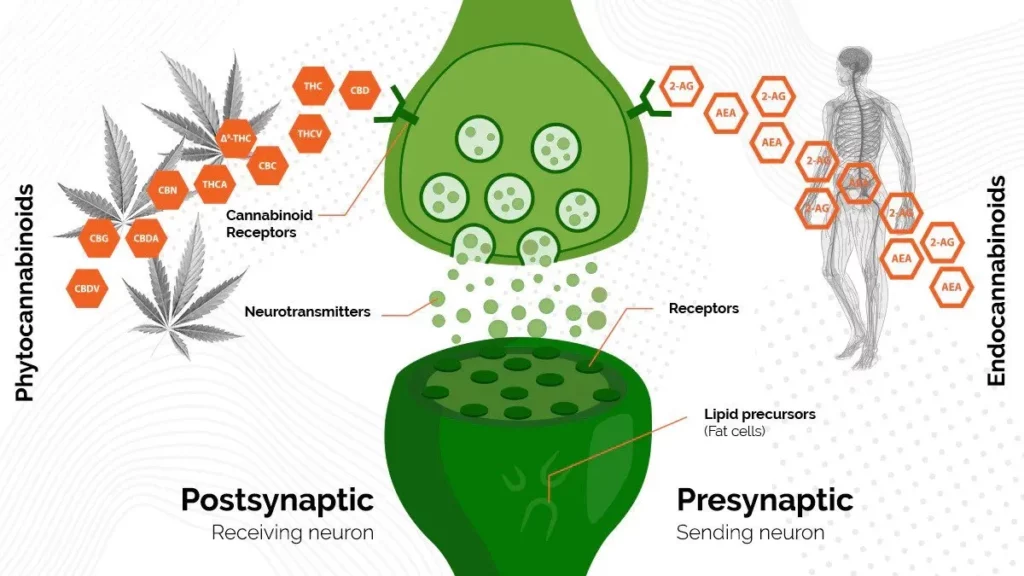
As per recent studies, CBDA has shown promising potential in influencing serotonin, a neurotransmitter associated with happiness and well-being. This interaction occurs via the 5-HT receptors, suggesting CBDA’s potential in managing conditions like anxiety and nausea.
The Benefits of CBDA: Not Just Another CBD
Here’s the million-dollar question: “What’s so special about CBDA?” Numerous recent studies have begun exploring this question in-depth, investigating CBDA’s potential benefits from reducing inflammation, and inhibiting the growth of breast cancer cells, to relieving nausea.
In a way, CBDA is an unsung hero, often overshadowed by its descendants like CBD and THC. However, the potential of this bioactive compound is enormous, and it deserves its spotlight.
CBDA Products: Choosing Your Path
CBDA products are as diverse as they are plentiful. From CBDA oils, and supplements, to topicals, these products offer you a plethora of ways to harness the potential benefits of this unique compound.
You might ask, “Where can I buy CBDA?” or “How do I use it?” The beauty of the internet is that it’s brought a multitude of CBDA products to your fingertips. Reputable online stores like ahem…Pure CBD Now, provides a variety of CBDA and CBD products, enabling you to select the right fit for your lifestyle. Here are some of our top CBDA and CBD products that you can buy now!
-
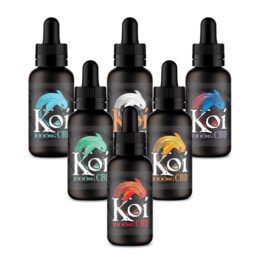 Koi CBD Vape Juice 30ml 250-1000mgFrom: $19.99
Koi CBD Vape Juice 30ml 250-1000mgFrom: $19.99 -
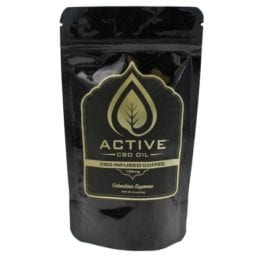 Active CBD Oil – CBD Infused Coffee 125mg or 500mgFrom: $25.99
Active CBD Oil – CBD Infused Coffee 125mg or 500mgFrom: $25.99 -
Product on sale
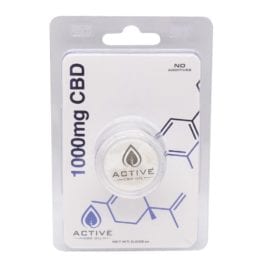 Active CBD Oil 99% CBD Isolate$12.99
Active CBD Oil 99% CBD Isolate$12.99 -
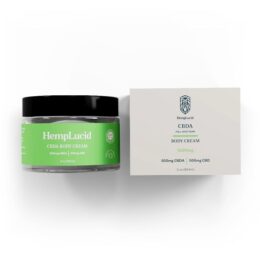 Topical CBDA Full-Spectrum Body Cream 1000mg$69.95
Topical CBDA Full-Spectrum Body Cream 1000mg$69.95 -
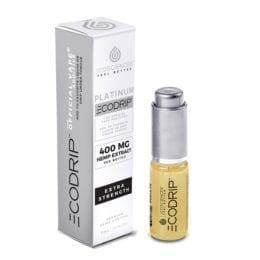 CBD Drip Platinum 58.0+mg CBD 7ml Full Spectrum$18.24
CBD Drip Platinum 58.0+mg CBD 7ml Full Spectrum$18.24 -
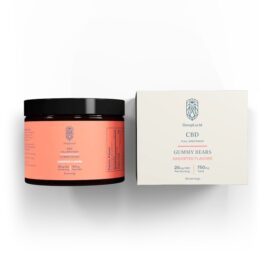 Hemplucid CBD Gummies Cubes 25mg Per Piece$59.95
Hemplucid CBD Gummies Cubes 25mg Per Piece$59.95
CBDA FAQ
Given the rising interest in CBDA, here are answers to some of the most asked questions:
What are the benefits of CBDA?
CBDA has shown potential for several health benefits, including reducing inflammation, easing anxiety and nausea, and possibly inhibiting the growth of breast cancer cells. However, more research is needed to confirm these findings.
Is CBDA more powerful than CBD?
The strength of CBDA compared to CBD largely depends on your body’s response and the specific condition you’re treating. Some studies suggest CBDA may be more effective in managing conditions like nausea and anxiety, while others may respond better to CBD.
What does CBDA do in the brain?
CBDA interacts with the body’s endocannabinoid system, particularly the 5-HT receptors that influence serotonin levels in the brain. This interaction may lead to potential benefits like mood regulation and anxiety reduction.
What are the side effects of CBDA?
CBDA is generally well-tolerated, with few reported side effects. However, everyone reacts differently to cannabinoids, and some people might experience minor side effects like nausea or diarrhea.
Does CBDA get you stoned?
No, CBDA does not produce psychoactive effects like THC, meaning it won’t make you feel ‘high’ or ‘stoned.’
The Verdict
In this sprawling world of cannabinoids, CBDA stands as an intriguing entity with untapped potential. From its roots as a raw form of CBD to its promising therapeutic benefits, CBDA proves that it’s more than just the mother of CBD—it’s a force to be reckoned with in its right. As we continue to explore the labyrinth of cannabinoids, one thing is clear: CBDA holds a key that could unlock a world of benefits we’re only beginning to understand.






